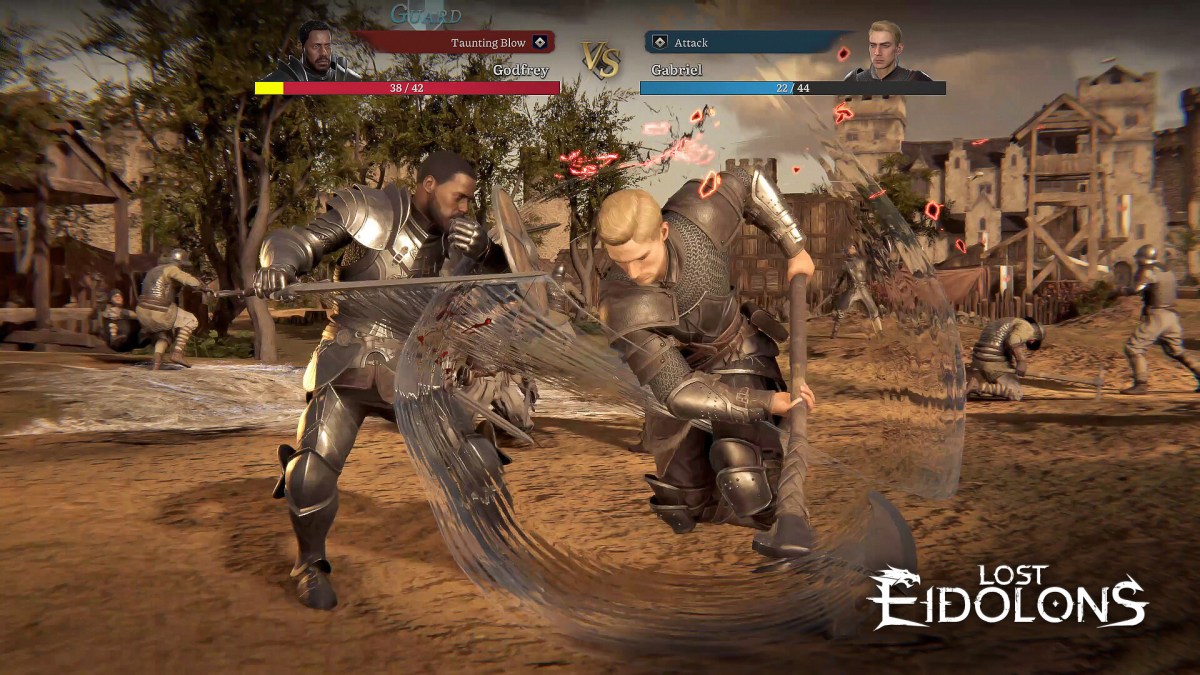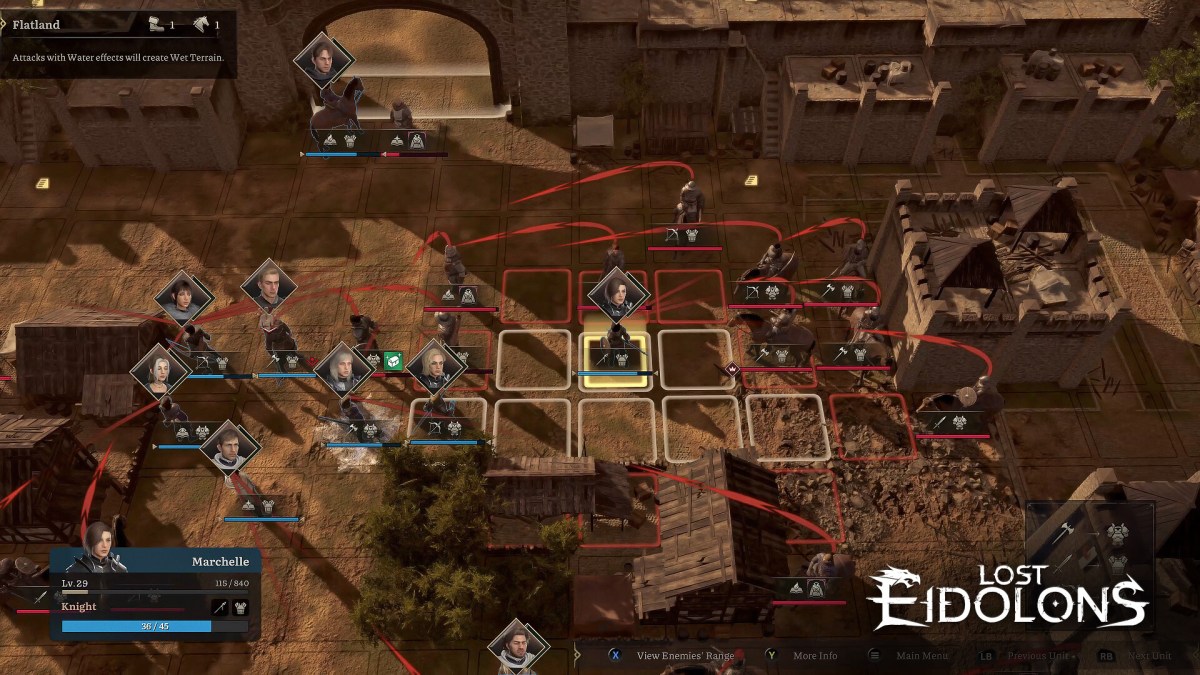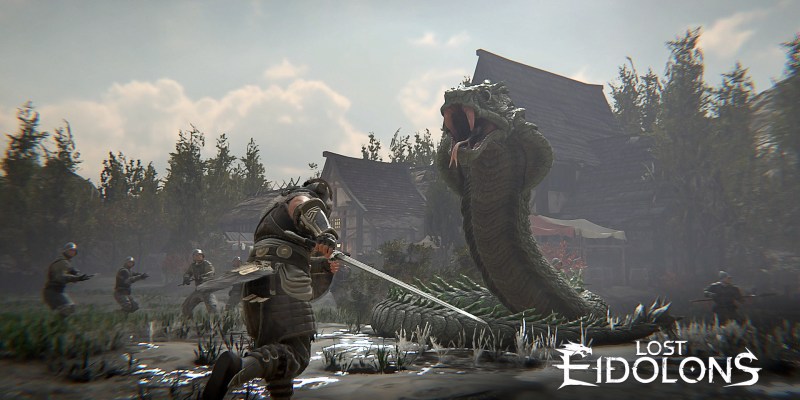Eden and his tacticians know the enemy commander, Lord Abelard, is vain and impulsive. He’ll take the bait, as long as it seems it’ll earn him glory like in the old days. A handful of your soldiers begin a frontal assault on Kiorzen. They run straight up to the gates, get shot by some arrows, then make a loud and fearful retreat. Abelard opens the gates and leads his army in pursuit. You bait him back, further, further again, and then you trigger the ambush.
The rest of your forces were hidden in the forest on both sides of the imperial forces. They leap into the battle, demoralizing the enemy forces, and capture Lord Abelard.
This was only possible because developer Ocean Drive Studio decided to make each battle in Lost Eidolons into a contest of characters with flaws and foibles, things that can be exploited during gameplay. In almost every chapter, Lost Eidolons introduces the enemy commander and the area in which the battle is to take place. What kind of person is their commander? Is the castle well protected and manned, or is it rundown and poorly situated?
Your characters formulate a plan using this information in cutscenes before the battle, and once the battle begins, this thread of the story continues through the gameplay. Your characters discuss what they see on the field, and objectives are set for you to complete the plan.
Many times in the story, you find yourself taking a castle or fort, but almost every time you have a plan that rests on the unique aspects of this particular place. The character of your enemies and allies shines through in what could otherwise be routine battles, as you see the enemy commander act in accordance with their character in a way other games often fail to do.

In Fire Emblem, you might hear from the enemy commander at the start and end of a battle, but whether they’re a desperate thief or a hardened enemy commander, they’ll probably stand in one place as their forces reinforce from doors or forts on the map with no fanfare.
In Lost Eidolons, reinforcements are an opportunity for story. They’re uncommon and are mostly either hiding or appear from the edge of the map because you’re being pursued. Eden will react to reinforcements, his tacticians will comment on whether they were expected or surprising, and you might even have a plan for the reinforcements before they arrive. The way the enemies fight you is part of how the story is told, with hardened commanders being more disciplined than simple ruffians and your battle strategy being varied based on your point in the overall plot.
Even the scripted story battles in XCOM don’t attempt the same level of detail. The Chosen in XCOM 2 each have their own unique abilities and personalities to go along with them, but they’re a handful of enemies in a game that otherwise focuses on the story created by your gameplay, as well as the interaction of your troops with new enemy abilities.
By taking this approach, Lost Eidolons intertwines its stories of military tactics with its gameplay. Tactics don’t just take place in cutscenes; they take place on the battlefield and must be executed or changed during gameplay.

This use of discrete plans and conversations during battle also allows character conflict to take center stage. A commander you’ve fought before might have a grudge and attempt to crush you. A second in command might reveal they don’t want to fight and, if you win the battle, join you and reveal their issues with their former leader. A fierce fighter you’ve met before might try to fight you on the field instead of weathering the siege, and this feels right because you know that’s just like him.
It also allows a smooth transition between battles and gameplay. When the story is about your plans, tactics, and battles, and continues to be sprinkled through even while you fight a battle, the pace isn’t slowed down by a long battle or dragged down as much by a long cutscene. Everything feeds into what comes next and feels at least a little more relevant.
Eden, your player character, is a commoner and begins the story as a mercenary who admits his lack of tactical skill. This means many of the tactical conversations also show his relationship to other characters. When two characters disagree, it’s ultimately up to Eden to pick the course of action, and even if only one plan is offered, the relationship between Eden and that character is elucidated and evolved by the way they discuss it and how much confidence he shows in them.
He takes advice from nobles, reclusive spellcasters, veteran warriors, and grizzled old men, and this varied band of tacticians creates a further connection to the companion system, where you can befriend members of your army through gifts and conversations.
The one weakness of this system is that it doesn’t allow for much player choice. On occasion, you can intentionally ignore or fail a plan, like purposely getting spotted while being stealthy, ambushing too early, and so on. But there’s no input from the player when formulating the plan.
Of course, no game could represent all possible plans due to the limits of games themselves — some options must be closed off, or else you’re simulating the real world. However, there could be the option for other games to allow multiple plans to choose between, or some other way to allow player input on the plans themselves, as well as the ability to carry them out.
Lost Eidolons’ weaving of battles, story, and character works well for the game. Not every game needs to be like Lost Eidolons, but for other character-focused tactics games, an approach like this one ties everything together.
